Leave a comment Cancel reply
This site uses Akismet to reduce spam. Learn how your comment data is processed.
Real-World Economics Review
WEA Books
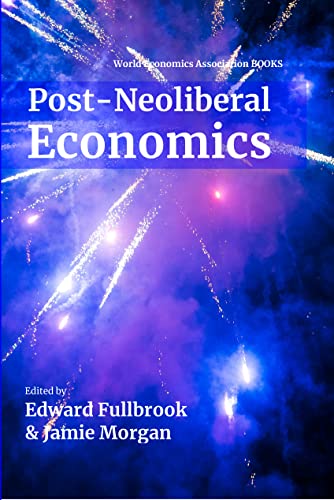
follow this blog on Twitter
Top Posts- last 48 hours
- Weekend read - A STIGLITZ ERROR?
- Economics — a dismal and harmful science
- With a modest financial transactions tax, Jim Simons would not have been superrich
- Dystopia and economics
- There ain’t no libertarians, just politicians who want to give all the money to the rich
- Keynes and the casino
- Cutting-edge macroeconomics …
- Reflections on the “Inside Job”
- USA: The Great Prosperity / The Great Regression : 5 charts
- Comments on RWER issue no. 91
"We cannot solve our problems with the same thinking we used when we created them." Albert Einstein
Regular Contributors
Real World Economics Review
The RWER is a free open-access journal, but with access to the current issue restricted to its 25,952 subscribers (07/12/16). Subscriptions are free. Over one million full-text copies of RWER papers are downloaded per year.
WEA online conference: Trade Wars after Coronavirus
Comments on recent RWER issues
————– WEA Paperbacks ————– ———– available at low prices ———– ————- on most Amazons ————-
WEA Periodicals
----- World Economics Association ----- founded 2011 – today 13,800 members
Recent Comments
- David Harold Chester on Weekend read – A STIGLITZ ERROR?
- pfeffertag on Weekend read – A STIGLITZ ERROR?
- CBASILOVECCHIO on Weekend read – A STIGLITZ ERROR?
- Arbo on Economics — a dismal and harmful science
- spamletblog on Economics — a dismal and harmful science
- bckcdb on Economics — a dismal and harmful science
- David Harold Chester on Real-world economists take note!
- Patrick Newman on Real-world economists take note!
- deshoebox on Real-world economists take note!
- felipefrs on The non-existence of economic laws
- Seeker on The non-existence of economic laws
- Hepion on Water Flowing Upwards: Net financial flows from developing countries
- yoshinorishiozawa on Cutting-edge macroeconomics …
- Jan Wiklund on The non-existence of economic laws
- yoshinorishiozawa on Cutting-edge macroeconomics …
Comments on issue 74 - repaired
Comments on RWER issues
WEA Online Conferences
—- More WEA Paperbacks —-
———— Armando Ochangco ———-

Shimshon Bichler / Jonathan Nitzan

————— Herman Daly —————-

————— Asad Zaman —————

—————– C. T. Kurien —————

————— Robert Locke —————-

Guidelines for Comments
• This blog is renowned for its high level of comment discussion. These guidelines exist to further that reputation.
• Engage with the arguments of the post and of your fellow discussants.
• Try not to flood discussion threads with only your comments.
• Do not post slight variations of the same comment under multiple posts.
• Show your fellow discussants the same courtesy you would if you were sitting around a table with them.
Most downloaded RWER papers
- Trade and inequality: The role of economists (Dean Baker)
- The housing bubble and the financial crisis (Dean Baker)
- Green capitalism: the god that failed (Richard Smith)
- New thinking on poverty (Paul Shaffer)
- Why some countries are poor and some rich: a non-Eurocentric view (Deniz Kellecioglu)
- Debunking the theory of the firm—a chronology (Steve Keen and Russell Standish)
- Global finance in crisis (Jacques Sapir)
- What Is Neoclassical Economics? (Christian Arnsperger and Yanis Varoufakis)
- The state of China’s economy 2009 (James Angresano)
Family Links
Contact
follow this blog on Twitter
RWER Board of Editors
Nicola Acocella (Italy, University of Rome) Robert Costanza (USA, Portland State University) Wolfgang Drechsler ( Estonia, Tallinn University of Technology) Kevin Gallagher (USA, Boston University) Jo Marie Griesgraber (USA, New Rules for Global Finance Coalition) Bernard Guerrien (France, Université Paris 1 Panthéon-Sorbonne) Michael Hudson (USA, University of Missouri at Kansas City) Frederic S. Lee (USA, University of Missouri at Kansas City) Anne Mayhew (USA, University of Tennessee) Gustavo Marqués (Argentina, Universidad de Buenos Aires) Julie A. Nelson (USA, University of Massachusetts, Boston) Paul Ormerod (UK, Volterra Consulting) Richard Parker (USA, Harvard University) Ann Pettifor (UK, Policy Research in Macroeconomics) Alicia Puyana (Mexico, Latin American School of Social Sciences) Jacques Sapir (France, École des hautes études en sciences socials) Peter Söderbaum (Sweden, School of Sustainable Development of Society and Technology) Peter Radford (USA, The Radford Free Press) David Ruccio (USA, Notre Dame University) Immanuel Wallerstein (USA, Yale University)


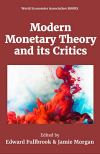

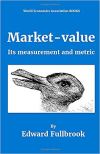


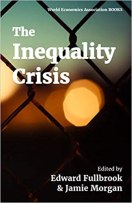














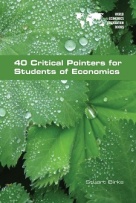


Excellent work Tim and Leonie.
You’ve brought together more than 200 years of critical thought into one concise paper.
I’m not aware that that’s ever been done before.
The Real World thanks you.
Precise and to-the-point. Thank you Professor Huber.
Professor Huber says:
““Credit creates deposits” has become a general teaching in post-Keynesianism and circuitism. The opposite of “deposits create credit” no longer applies to the bank-customer relationship in a predominantly cashless money system. … Keynes’ writings are somewhat contradictory in this regard. He endorsed the bankmoney theory in his earlier writings, but fell back on the formula of “investment = savings” in his later General Theory. Under conditions of primary bankmoney creation the formula still applies to secondary credit among nonbanks, no longer, however, to primary bank credit”.
The beginning of this is helpful, but I’ve argued before (particularly in sad disagreement with Egmont Kakarot-Handtke) that this is a superficial and in fact misleading reading of Keynes’ GT. Keynes goes on to discuss different types of investment and non-use of liquid holdings, and on p.85 concludes the chapter on “the Meaning of Saving and Investment” with
“The reconciliation of the identity between savings and investment with individual free will depending on saving being, like spending, a two-sided affair. … [Likewise with] the fundamental proposition of monetary theory.
“Both these propositions follow merely from the fact that there cannot be a buyer without a seller or a seller without a buyer. Though an individual whose transactions are small in relation to the market can safely neglect the fact that demand is not a one-sided transaction, it makes nonsense to neglect it when we come to aggregate demand. This is the vital difference between the theory of the economic behaviour of the aggregate and the theory of the economic behaviour of the individual unit, in which we assume that changes in the individual’s own demand do not affect his income.”
In short, the argument of the GT is not about definitions of relationships but about what can be seen in a macro view of economics that is being obscured in the old micro view. It still neglects the reality of the pre-existence of surplus but deteriorating real goods whose use and maintenance can be facilitiated by provision of monetary credit.
Jørgen Nørgård & Jin Xue, “From green growth towards a sustainable real economy”.
The abstract of this succinctly captures a good effort:
“Taking the simple static equation: I (impact) = P (population) ·A (affluence) ·T (technology) as the point of departure, this paper discusses the delusion of decoupling economic activities from environmental impacts (I) by resorting to simply reducing eco-intensities (T), (i.e. increasing efficiencies) through technological advancement… Overall, it is suggested that given an analysis not confined to monetary terms, but with real cost and real benefits represented by environmental damage and human satisfaction, respectively, sustainability in today’s affluent countries might be achievable at no net cost.”.
But will measures of evident environmental damage and human satisfaction really help achieve what policy makers don’t care about? Contraception hasn’t contained population growth and the scarcity of affluence has on the whole meant wanting more of it. Is this not missing these crucial points?
a. Human (and more generally animal) population growth adds to the problem but vegetative population growth subtracts from it. This sadly does not seem to be obvious to city dwellers.
b. Human population control by self-control adds to human satisfaction but political resort to biological culling by wars and plagues subtracts from it. However, self control of population in dispersed cultures requires knowledge of local targets and prior knowledge of status, and provision of the necessary information channels requires politicians to study not ancient Greece, Rome and Macchiavelli but the PID steering control theory of information science.
c. Belief that money has positive value as a means of achieving affluence adds to (indeed creates) the problem. However, money is now created by bankers as IOU’s requiring to be paid back in real terms, this either subtracting from affluence and satisfaction or adding to to environmental impact by creating unnecessary work and wasteful technological change. The current belief is therefore wrong, and self-control of our own affluence requires us all to understand money (and goods bought with it) as of negative value, as it is with a credit card debt. This can be effected by withdrawal of debit cards and writing off ownership at death so that even the rich, while enjoying earned riches, can see how much they owe society .
Comments on
“The coming revolution in political economy” by
Tim Di Muzio and Leonie Noble
——————————————-
Although the money-multiplier model is indeed discredited (no need to argue why in this blog), the reasons stated by the authors are not correct in my assessment.
Double-entry bookkeeping can work perfectly fine even with this model.
See following example:
Assume the household sector (HS) has $100 cash (you can imagine a government sector with $100 liabilities so that all financial assets balance out…).
Assume 10% reserve requirements (as per institutional requirements or liquidity preference of HS)
Households
Assets 100 (cash)
Liabilities 0
Banking sector
Assets 0
Liabilities 0
——–
Now the money is deposited to the Banking sector (BS) thus the HS is exchanging one asset for another and the BS is creating an asset and a liabilitiy
Households
Assets 100 (demand deposit–dd)
Liabilities 0
Banking sector
Assets 100 (cash)
Liabilities 100 (dd)
——-
Now the BS is rebalancing the assets creating (temporarily) $90 of “loanable funds” (a highly dubious concept indeed!–no need to argue why in this blog…) and keeping 10% reserve.
Banking sector
Assets 10 (cash reserves) + 90 (lf)
Liabilities 100 (dd)
——–
Now the $90 of lf are loaned to the HS. This means that the HS created equal assets and liabilities (cash/loan) and the BS exchanged an asset for another (lf for loans), resulting in
Households
Assets 100 (demand deposit–dd) + 90 (cash)
Liabilities 90 (loans)
Banking sector
Assets 10 (cash reserves) + 90 (loans)
Liabilities 100 (dd)
——
and after the HS deposits this extra cash to the BS we get
Housholds
Assets 100+90 (demand deposit–dd)
Liabilities 90 (loans)
Banking sector
Assets 10 (cash reserves) + 90 (loans) + 90 (cash)
Liabilities 100+90 (dd)
——-
which after rebalancing of the BS we get:
Banking sector
Assets 10+9 (cash reserves) + 90 (loans) + 81 (lf)
Liabilities 100+90 (dd)
——-
This process continues until the lf become 0 resulting in the final snapshot:
Housholds
Assets 1000 (demand deposit–dd)
Liabilities 900 (loans)
Banking sector
Assets 100 (cash reserves) + 900 (loans)
Liabilities 1000 (dd)
——————————————————
Summary:
The double-entry book-keeping works just fine even with the discredited money-multiplier model.
The model cannot be discredited based on math/accounting principles as the authors suggest.
Please bear in mind that I am not defending this model at all.
Comments on
“The coming revolution in political economy” by
Tim Di Muzio and Leonie Noble
——————————————-
1) The “orange juice company” example is misleading:
Do the authors suggest that the costs for oranges, machines, packaging, utilities, interest does not create additional purchasing power ?
Eg, the farmers who get $100 for the oranges they sell is not PP for the economy?
A precise argument would require to consider a closed (dynamic) economy…
2) Similarly the argument on p.101 :
“Thus the bank that made the loans expects to be paid $3300 dollars, however there is only $3000 circulating in the economy.”
is not convincing:
All you need is a “money velocity” of 1.1 in order to create additional income of $300 to be able to pay the interest.
Please note that the point I am making with these comments is that stronger arguments are needed to make the above statements, not that the statements are necessarily incorrect.
The theory that the increased “velocity of circulation” of money creates purchasing-power was entirely discredited by C. H. Douglas in the early part of the 20th century. Money does not “circulate”. It is issued as bank credit for production and cancelled when the goods produced are sold and the money returns to the bank for cancellation. It is issued and cancelled continuously. A new loan results in creation of new production which has a whole new set of prices. Money does not go from butcher to baker to shoemaker. Businesses have costs incurred by production loans. These must be repaid from sales. In other words, money is “short-circuited” at each stage of payment for goods. A dollar is a dollar and not two, three or four dollars depending upon some mythical “velocity”. It is true that the pace of production and consumption can be accelerated or decelerated dependent upon the rates of creation and cancellation of credit–but this is something altogether different. One unit of money can only cancel one unit of financial production costs and when it does so it is cancelled as effective purchasing-power. Douglas brought the study of money or credit and economics down to ground level where it makes sense from an empirical standpoint. Economics as it has been taught falls more in the realm of legerdemain and/or black magic than rational study.
Major C.H. Douglas on “Causes of War” – part 1 – YouTube – BBC 1934
Major C.H. Douglas on ‘The Causes of War’ – part 2 – YouTube – BBC 1934
https://www.youtube.com/watch?v=NdcVuf8ajxc (Robert Klinck – “Economists’ Failed Professionalism” – 2016)
http://www.socred.org
https://en.wikipedia.org/wiki/Social_credit
https://www.youtube.com/watch?v=ivfdcpB_fmg (“Social Credit and the Christian Ethic” by Norman F. Webb 1937)
Repayment of loans destroys money. However, what we are talking about is the payment of interest, which does not destroy money. It becomes income of banks (and assuming no retained profits, it becomes income to households).
See a simple example here:
https://www.plustransfer.com/download.php?id=abe105f7def1a8fd0cf5876336cb4255
on how an initial loan in the economy produces enough income to pay interest FOR EVER without producing new credit!
If you can tell me where the mistake is in the above simple example I would appreciate it.
You can always refer to this simpler example:
https://www.plustransfer.com/download.php?id=5496fcc76b3ed4ed1d3e88746d040596
Interest payments made by the private sector to other entities in the private sector simply just moves assets/liabilities around within the private sector. When a bank loans out more than is needed to maintain their reserve requirements and leverage ratio’s they will purchase reserves from the federal fund inter-bank market. If needed they will obtain reserves through the Fed’s discount window.